
It’s amazing how far you can get with belief. It also helps when you’ve got three amazing drivers, a great car and a dedicated team around you. When JRM’s LMP1 HPD ARX-03a crossed the line at five minutes past three last Sunday afternoon at the end of a gruelling Le Mans 24 Hours, it was an emotional moment for everyone involved.
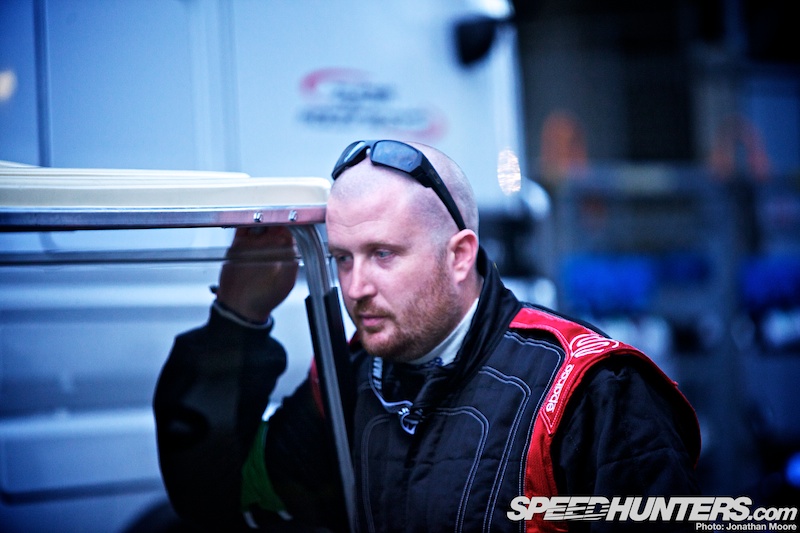
JRM have had a meteoric rise through the sportscar scene: from a shell of a GT1 GT-R arriving from Nissan at James Rumsey’s JRM factory in Rye, England, at the beginning of 2010 to a top 10 finish at Le Mans in just two and a half years. And a Le Mans that is once again part of a World Championship for sportscars.
JRM aimed squarely at World Championship-level from the off with its entry into World GT1 under the Sumo Power brand in 2010 with its pair of GT-Rs, followed by a four-car effort in GT1 last year with two pairs of GT-Rs run by Sumo Power and JRM which resulted in taking the World Championship with the #22 GT-R. With the change in GT1 rules for 2011 it looked like JRM would step back and concentrate on their GT3 customer programme.
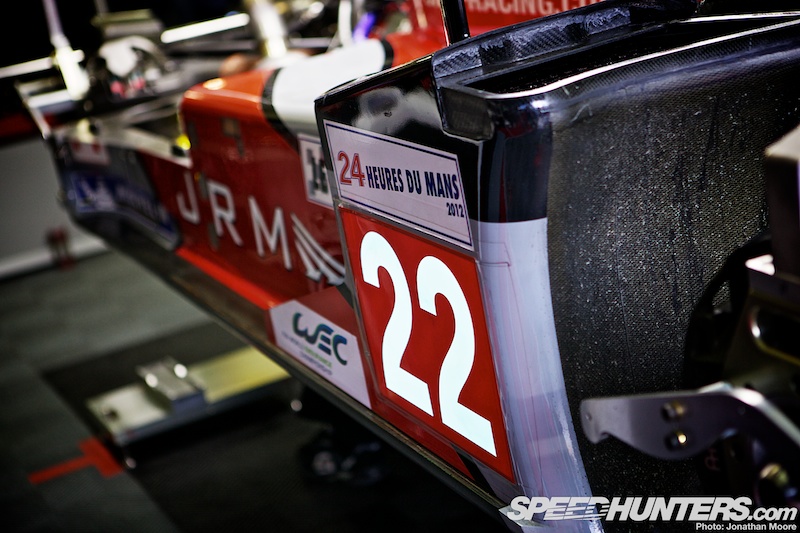
Then back in February came the shock decision that James was taking the team into the LMP1 class of the World Endurance Championship, a move that even caught most of his own team by surprise!
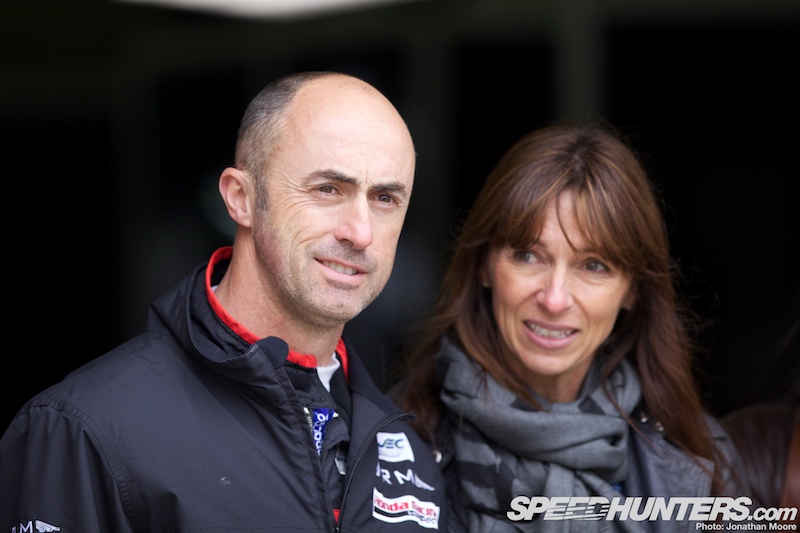
JRM’s driver line-up for the year oozes class – and provided them with a ton of Le Mans experience courtesy of David Brabham and Peter Dumbreck. Brabs in particular is a veteran of the race: 18 starts have netted one overall victory (Peugeot in 2009) and two GT1 class wins (with Aston Martin in 2007 and 2008).
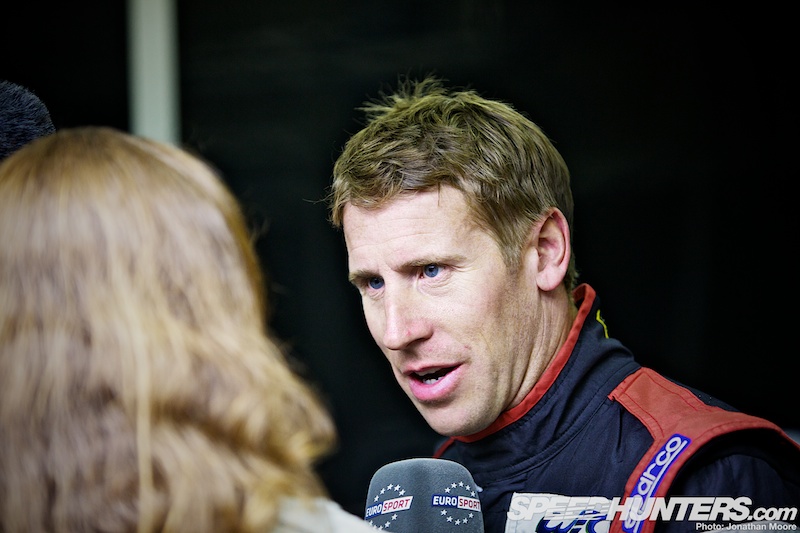
Peter was no stranger either: this would be his fifth start, his previous outings including the notorious Mercedes-Benz CLR flip of ’99 and three GT2 runs in Spykers.
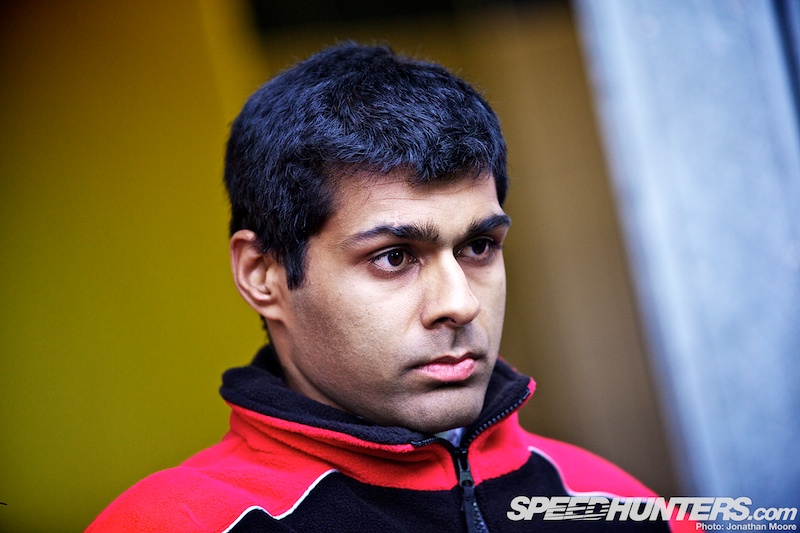
Karun Chandhok came with experience of Formula 1, and would become the first Indian driver to take the start at Le Mans, following Narain Karthikeyan’s shoulder-dislocating fall off the pit-wall just before the 2009 running of the 24 Hours.
The team’s first run with their LMP1 challenger had been at the opening round of the WEC at the Sebring 12 Hours classic in Florida, where they managed a 12th-place finish (sixth in LMP1) despite having to finish assembling their brand-new car in the paddock; next up was the 6 Hours Of Spa: again 12th place, eighth in LMP1, but these finishes placed the team second in the LMP1 rankings behind Rebellion. Next stop: the Le Mans 24 Hours.
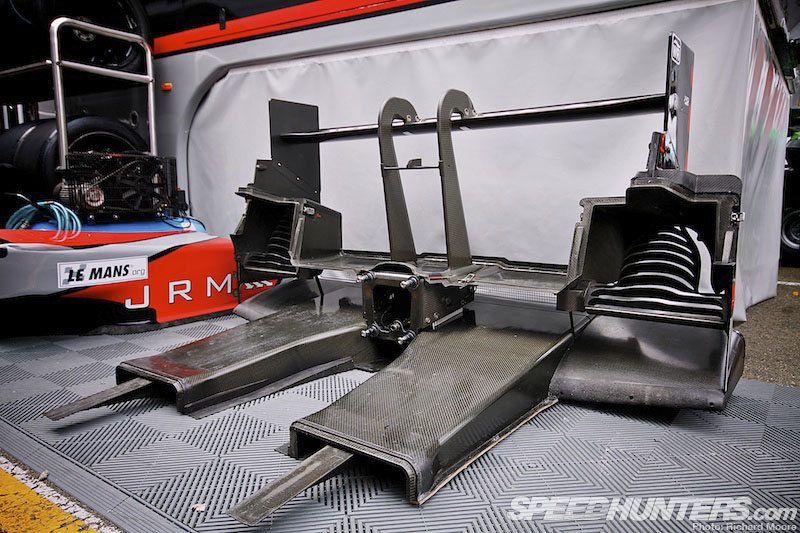
The Le Mans Test Day, two weeks before the race, had provided team manager Nigel Stepney and his engineering team with valuable data: they decided to be more aggressive with the new aero package they’d tested.
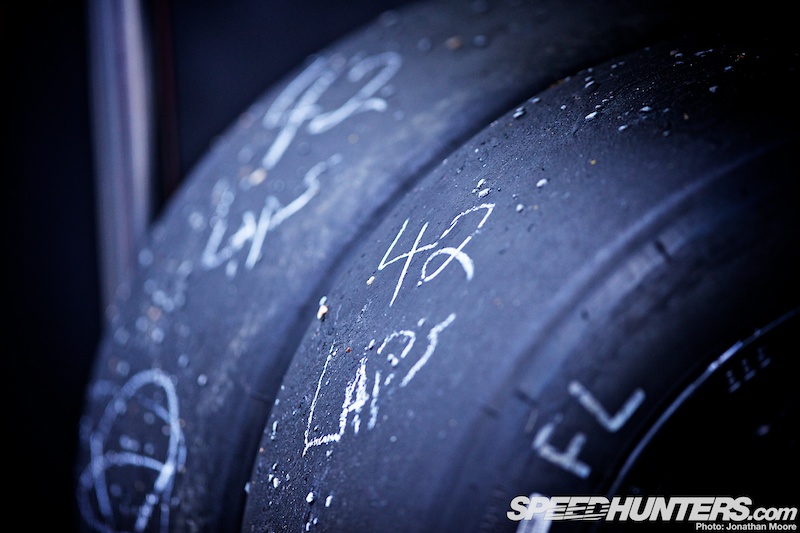
The biggest concern was, as ever, with tyres: the team had no running on the intermediate tyre, which they believed would have a very small operating window.

Weather forecasts were changing every day as time ticked down to the first track sessions of race week, following the previous weekend’s scrutineering in the middle of Le Mans town.
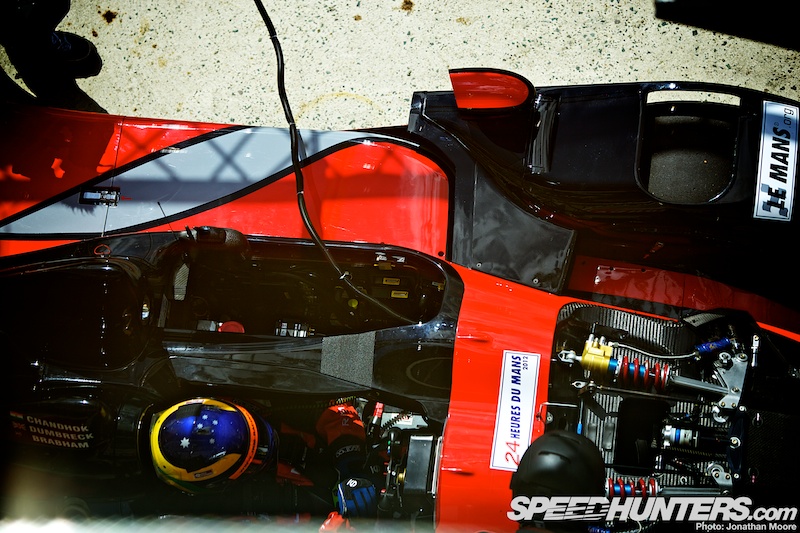
With the Audis and Toyotas virtually untouchable, the team’s realistic target was to beat the fastest petrol-powered opposition: the pair of Rebellion Lola-Toyotas, the Pescarolo Dome and, most importantly, the second HPD ARX-03a in the race, that of the Strakka team.
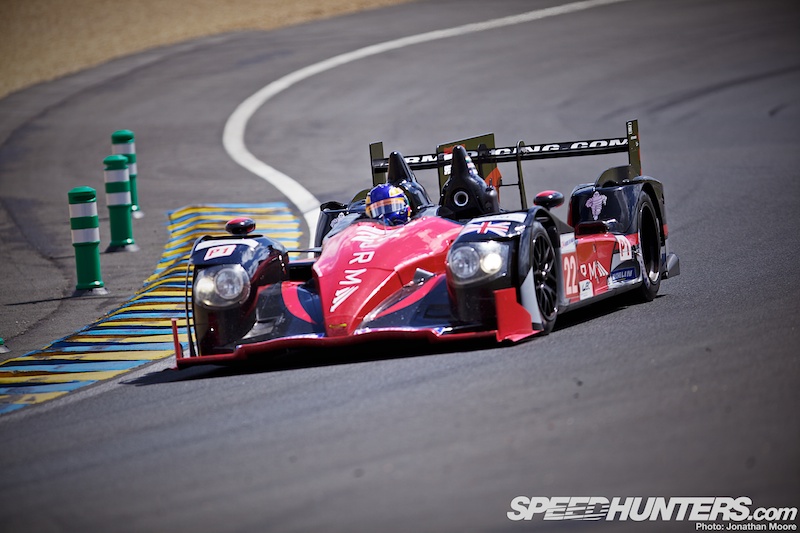
During the four hours of the first Free Practice session on Wednesday the team took it relatively easy: Brabs went out in the HPD for three runs totalling 20 laps in the first half of the session before handing over to the other drivers. He set a time of 3:34.641s, which would stand as JRM’s fastest time of the session – and eventually of all four practice and qualifying sessions. If only FP counted towards the grid…
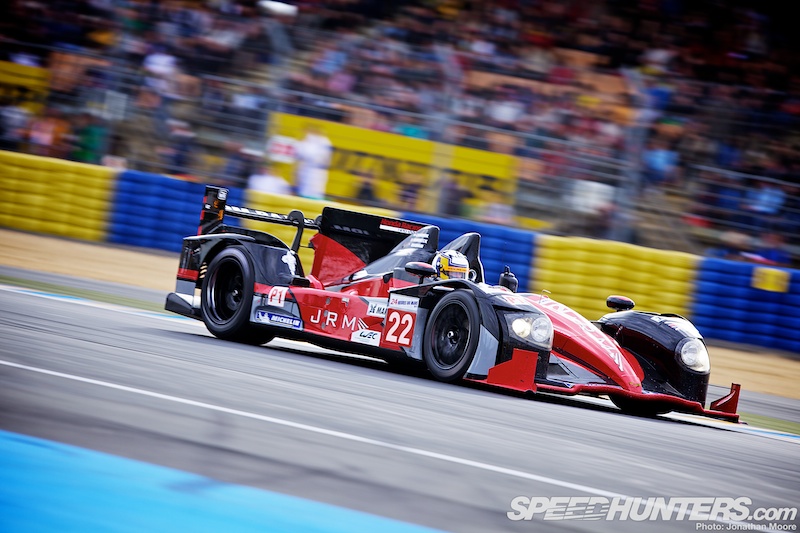
The rain that had been forecast held off, though conditions on the green track were still tricky: the public roads the circuit uses carry a year’s worth of spilt petrol and debris that is gradually cleaned off the more the Le Mans cars run.
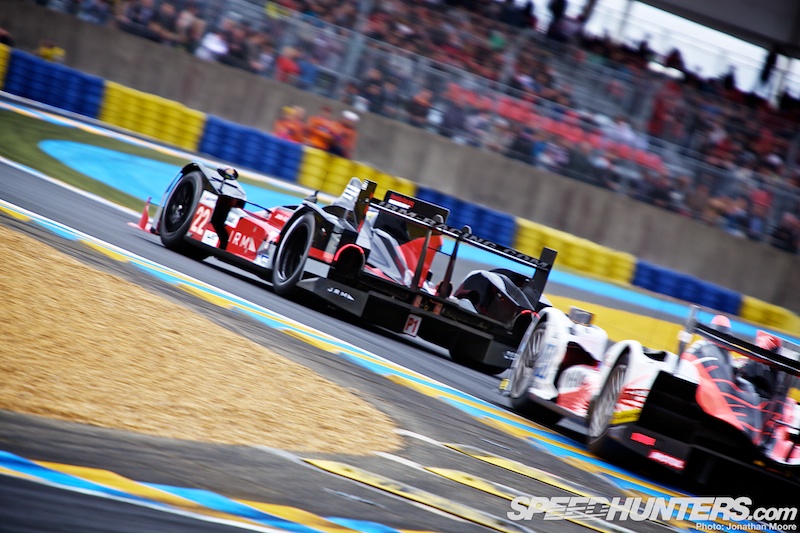
Karun reported some instability on the rear of the car, and took a trip through the gravel at Dunlop: an event that he shared with many other drivers in this first session. Brabs took over again to compare set-ups before handing the HPD to Peter to complete the session with a couple of shakedown laps. The three drivers completed 29 laps between them, finishing 10th fastest in LMP1.

The top speed for the #22 car was measured at 317.6kph at the timing point just before the first chicane on the Hunaudières straight – 1kph slower than the Strakka HPD and Pescarolo Dome (which was always expected to be very fast in a straight line) with the quickest of the six factory LMP1s, the #7 Toyota, clocking an eye-watering v-max of 332.1kph!

With night having fallen, from 10pm on Wednesday the team would take part in the first of three Qualifying sessions that would set the grid for the 24 Hours. Again goals were modest: Peter was first out in the car, setting the fastest time for JRM during his four-lap stint with a 3:37.088s lap, putting them 11th quickest overall – though JRM decided not to go flat-out in this session as they expected track conditions to improve on Thursday.
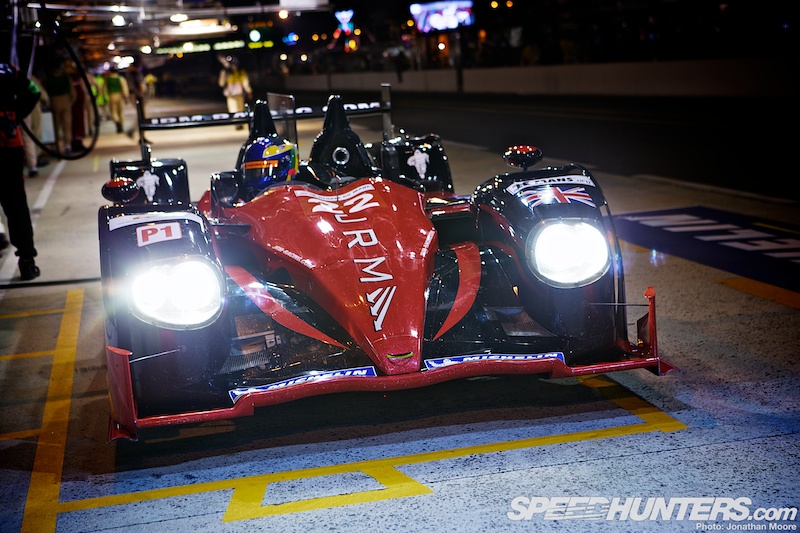
The real target was to get the drivers used to night-time conditions and to gather information so the team could implement small improvements and push the car up the field. The drivers completed 19 laps in total – the top speed was now up to 319.5kph, almost right on the very agreeable 200mph mark.
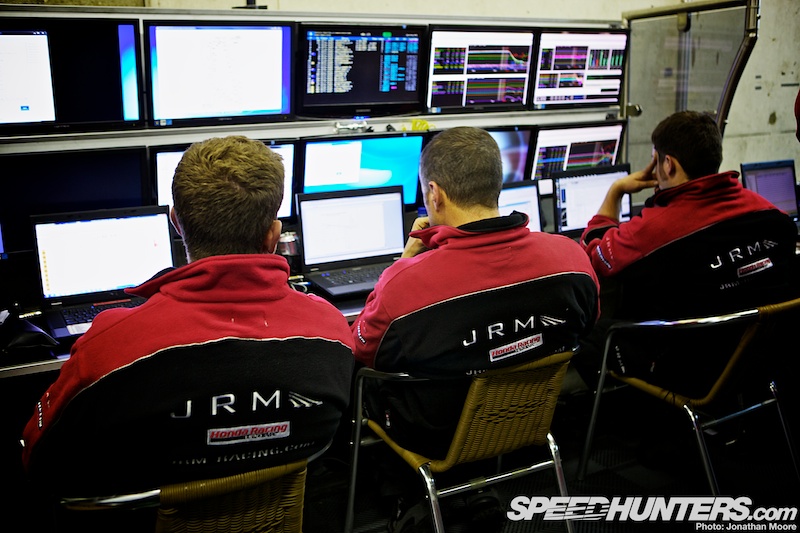
David: “We had to analyse the data as we were still missing some speed. We knew what the problem was, but how to fix it was going to require some creativity…”

It was a challenging day, as the team tried to understand the tyre situation and behaviour of the new aero package during sessions with wildly varying temperatures and grip around the track: Le Mans has a steep learning curve at the best of times.
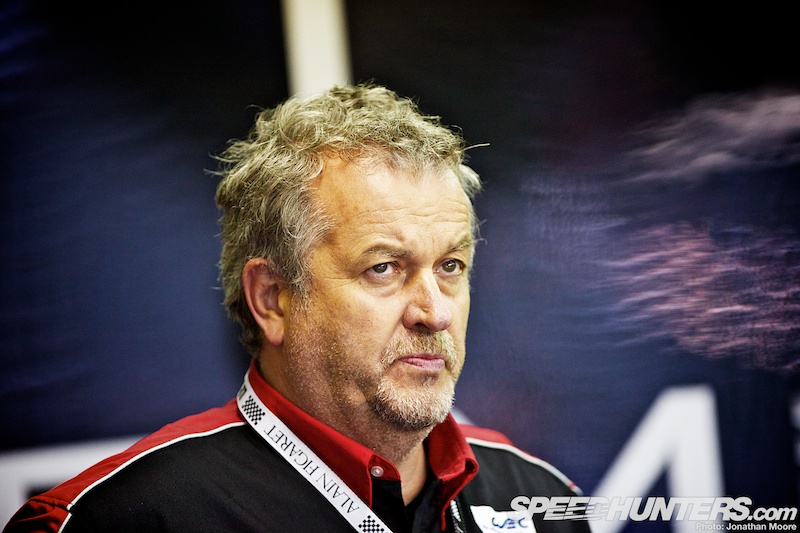
Nigel: “We didn’t run any new tyres in the session and we got caught in traffic on several potential fastest laps, so the times weren’t entirely representative of our potential. We were struggling for grip and getting the tyres up to temperature but we did have an idea of why this was happening, which gave us a direction to go.”
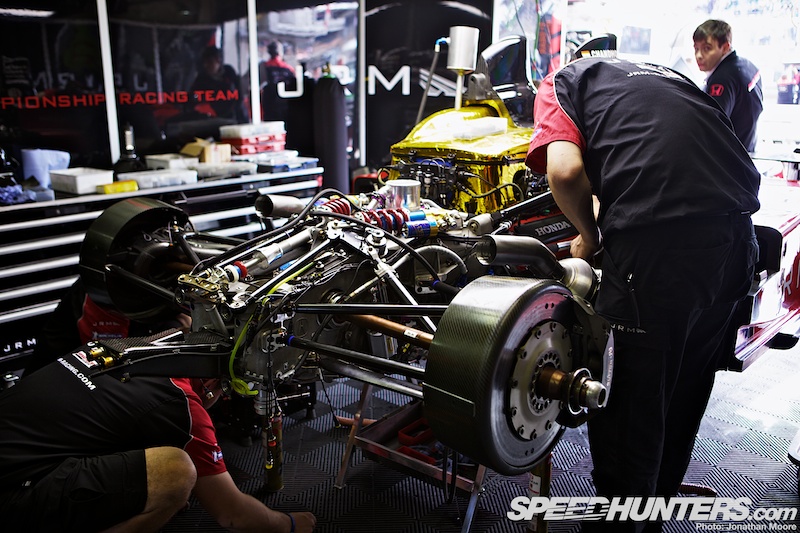
If Wednesday was challenging, Thursday was bruising… The team discovered that the gearbox had been damaged in Karun’s off, so decided to change the gearbox and also instal the race engine at the same time. Karun: “I hit some debris through Tertre Rouge and the car felt like it took off. We didn’t know until we checked thoroughly overnight but the impact of coming back to ground had cracked the gearbox.”
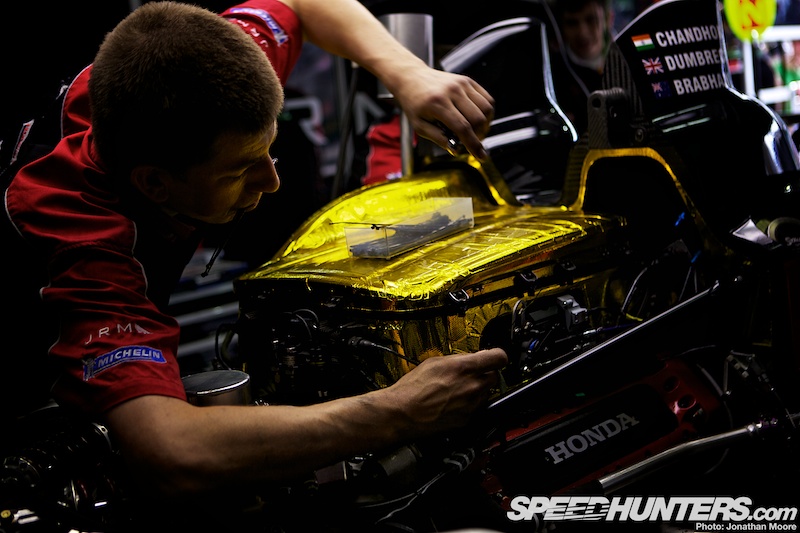
This wiped out the first two-hour session: the mechanics worked frantically to finish work by the end of the session so they could shake the car down ahead of the final two hours of night qualifying. In the end, Peter would manage a single sighting lap in the dying moments of Q2.
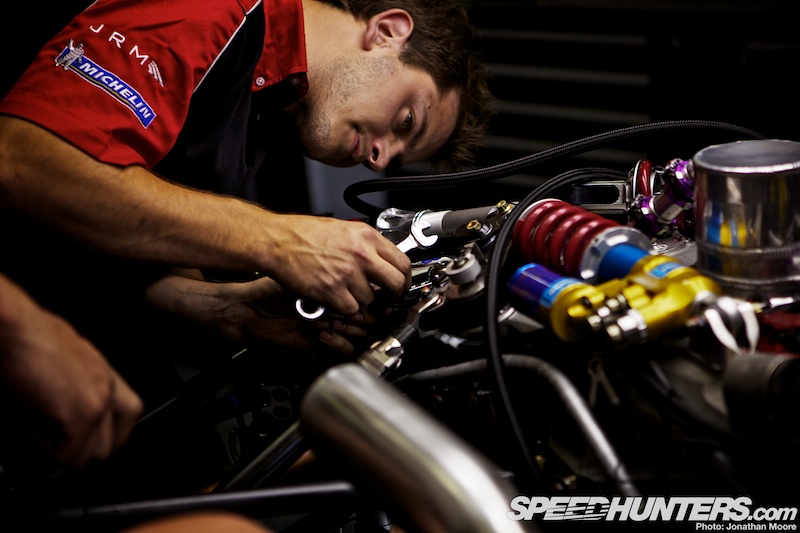
Brabs was held off from going out in Q3, having put in the bulk of the laps the previous day, and it was decided to unleash just Peter for JRM’s final push in the third session. Peter’s 13-lap run resulted in a lap-time improvement to 3:35.421s – though no improvement in top speed – which placed #22 11th on the grid for Saturday’s rolling start. Peter: “It was a tough day with a fair few issues but we always knew that as a rookie team in the top class it was going to be that way. The team acted very professionally to get through all the changes and condense the programme into the final session.”
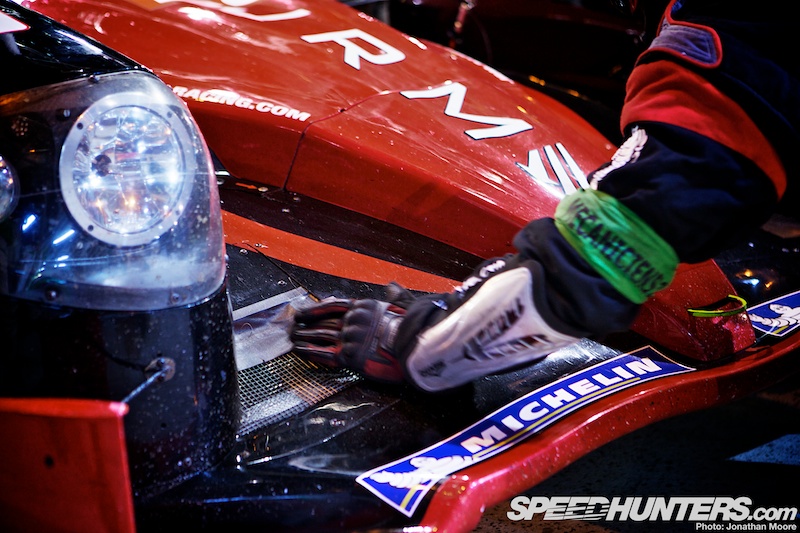
It’s amazing how low-tech some set-up changes are. Want to change the amout of air flowing through the nose ducts? Rely on good old tank tape. The team were just happy to have qualified for their first ever Le Mans: the set-up was still not completely perfect, but Nigel seemed confident that they could evolve that during the race. The bad news was yet another late night for the team ahead of the race: not the ideal preparation for a round-the-clock marathon.
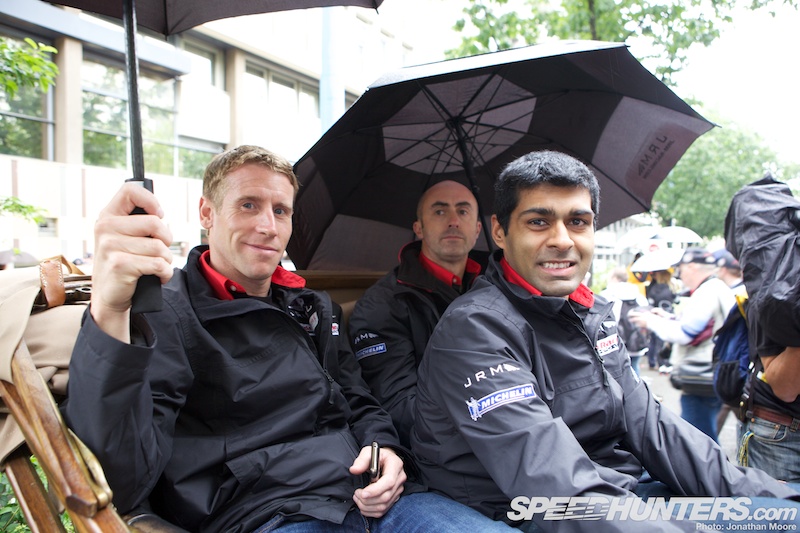
The work continued in the garage on Friday as the drivers were whisked off to the centre of town for the Parades Des Pilotes, the traditional introduction of the 24 Hours drivers to waiting fans.

Typically, this was the time that the rain did decide to come down, just as the drivers had climbed into the back of their cars and the crowds had packed themselves against the barriers.
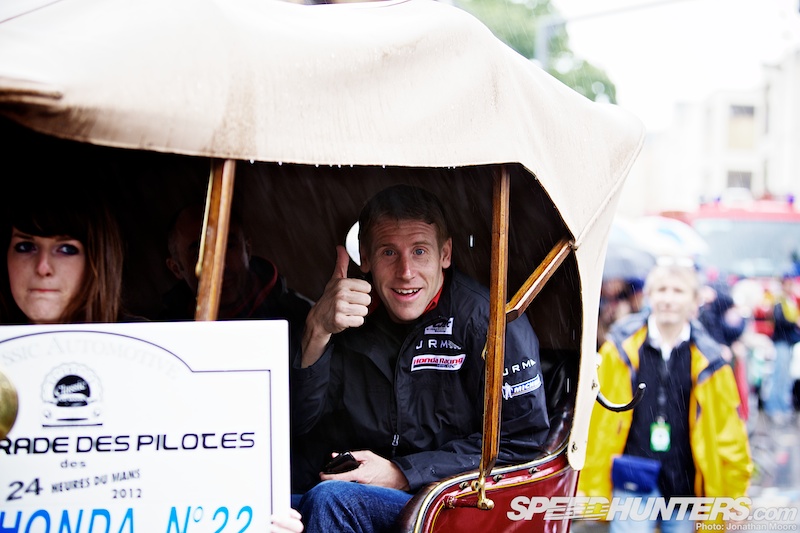
Enthusiasm can go a long way… Despite the horrible conditions the crowds never waned, and the JRM crew joined the other 153 drivers in the slow drive through the town, handing out flyers and signing autographs as they went.

The conditions barely improved overnight. The rain continued on and off, and the soaking track for race-day warm-up meant that there were no serious times set, with a red flag costing 10 minutes of the session. The team registered five laps to record information about the wet conditions: the forecast was still looking uncertain for the 24 Hours itself…

Just like the Nürburgring 24 Hours, the grid at Le Mans is an overwhelming place to be. Overlooked by the packed tribunes, the teams begun to wheel their cars out onto the grid around half past one.
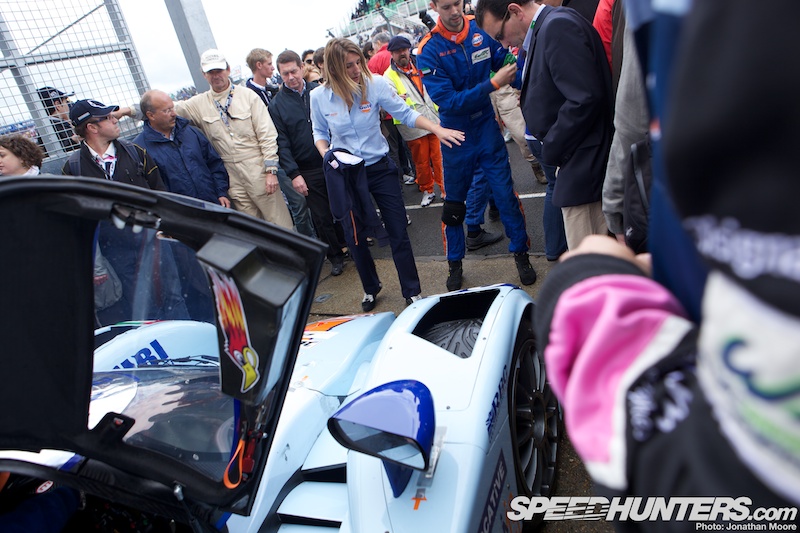
This meant having to negotiate through the throng of guests and hangers-on blocking their way, which were only got past with the help of the many whistle-blowing marshals. Officials at the top end of the grid then began to move down the track with a rope held between them to force the non-essential people to move off!
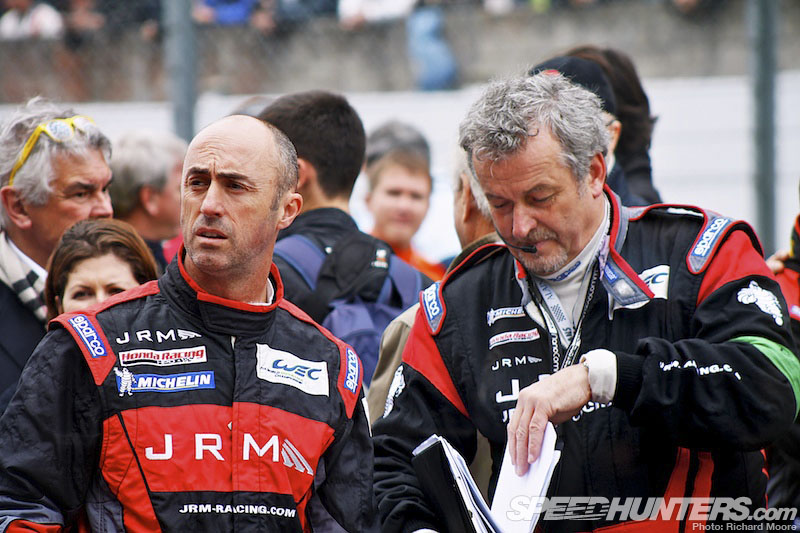
The cars are initially lined up in the classic ‘ear of corn’ formation against the pit-wall, as per the original running starts of Le Mans past. Even at this stage the team would still be finalising their approach to the race.
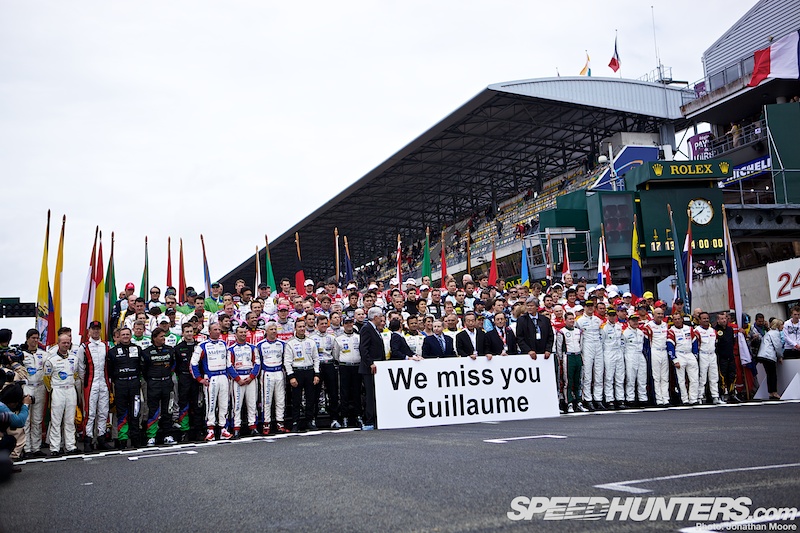
Whilst the mechanics carried out final checks on the cars, all the drivers were herded to the bottom end of the grid for the driver photo op, complete this year with a tribute to Guillaume Moreau, who had been forced to miss the race due to his crash on the Test Day.
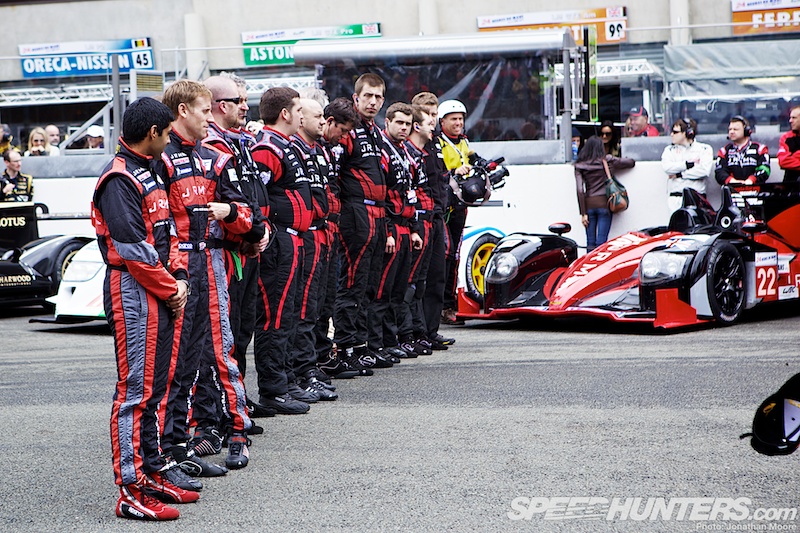
Next up came a new idea: all the driver crews and mechanics were lined up next to their cars, presenting the great sight of all 56 teams standing in marching rows.
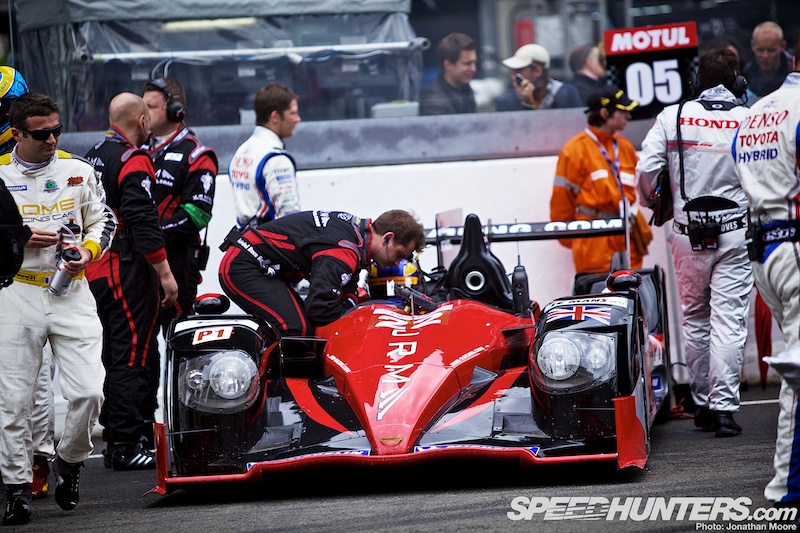
With 40 minutes until 3pm the first engines were fired up, and with 20 minutes to go the cars were waved off the to circulate the track and form up on the dummy grid. Most cars filtered off through the pits for a second sighter lap before taking up their starting position.
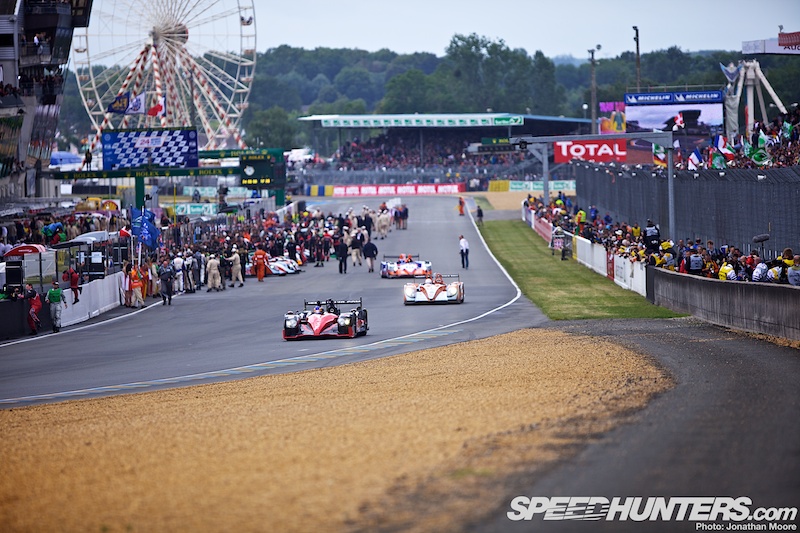
All cars that would be taking the rolling start were now in position: JRM’s Honda-powered rival, the #21 Strakka HPD, had a gearbox problem as it was being wheeled onto the grid and was undergoing frantic repairs in the pits; several other cars would also not be there at the start. At the five minute board the mechanics cleared the grid and the safety car led the pack away as the French Air Force display team roared overhead.
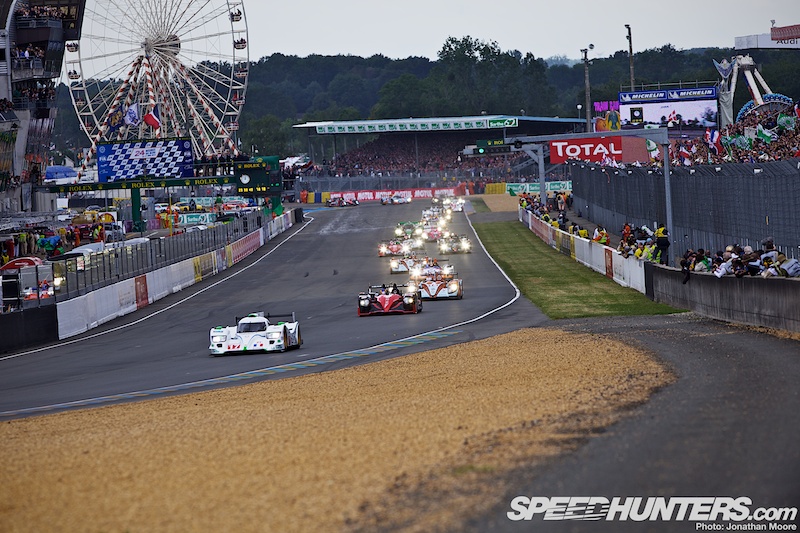
At 3pm, with stirring music blaring out of the circuit PA, the cars reappeared at the Ford Chicane, the safety car turned sharp right into the pit-lane and the pack was released. The Toyotas and Audis streaked away, already in their own six-way battle. Behind them, the two Rebellion Lolas busied themselves in an intra-team fight, followed by the Pescarolo Dome and then David in #22, already ahead of the #15 Oak Pescarolo and into 10th.
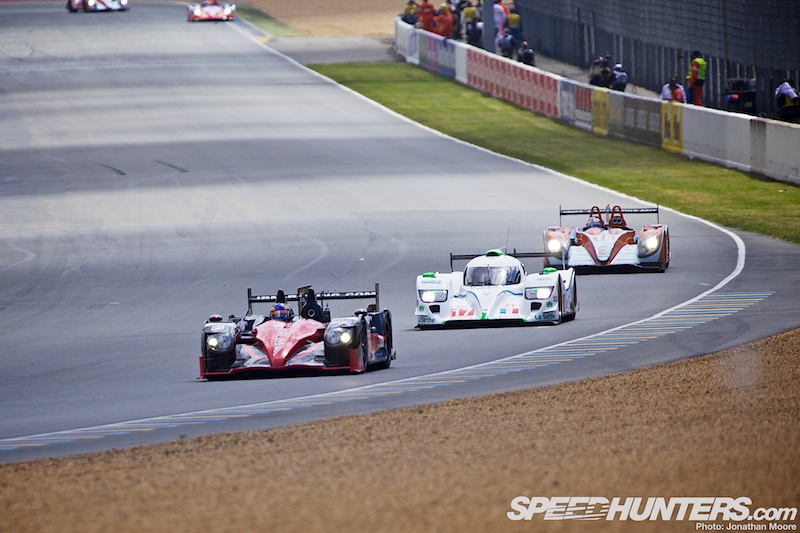
For most of his opening stint David was involved in an exciting three-way tussle for ninth with the Dome and Oak LMP1s. The drops of rain that fell right as the Tricolor was waved quickly burned off – it looked like they were in for a dry race.
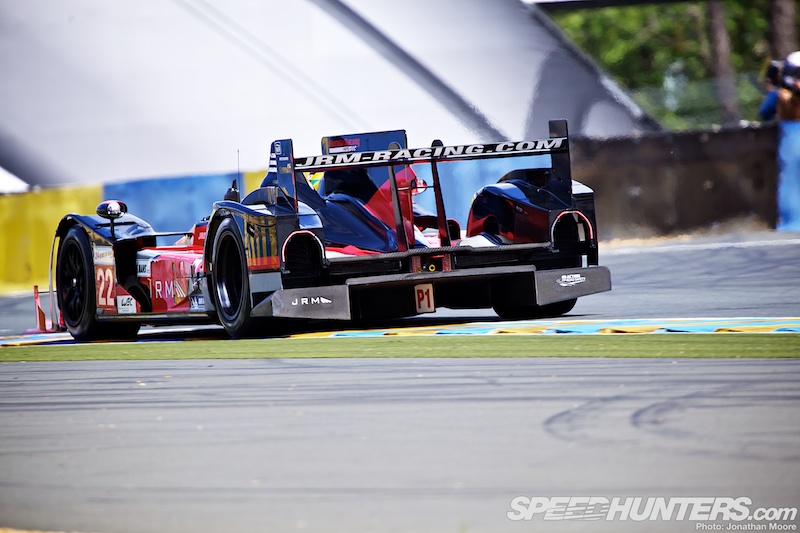
Karun was second in to drive #22 after David’s opening double-stint: he then set to work with a quadruple stint in the HPD that saw the HPD inexorably make its way forward hour by hour. The HPD would be putting in 11-lap runs between fuel and alternate tyre stops.

Karun handed over the HPD to Peter in eighth place on lap 79 after completing 44 laps at the wheel, and by 9.30pm #22 was running in sixth overall; at 10.10pm Peter temporarily took the car through to fifth as the #13 Rebellion Lola pitted.

JRM were being helped by problems for the Toyotas and Audis: Davidson’s flying Toyota, Nakajima’s Deltawing-destroying overtake and the #3 R18’s trip into the armco all helped move #22 up the order. Le Mans is all about keeping on the black stuff…

Half an hour later Peter had a trip through the gravel after the Dunlop Chicane due to a tyre failure – this forced him to crawl round the remaining 11km of the track to recover to the pits, losing valuable time. Back in the pits the car was jacked up onto the trolleys and wheeled back into the garage to check for suspension damage.
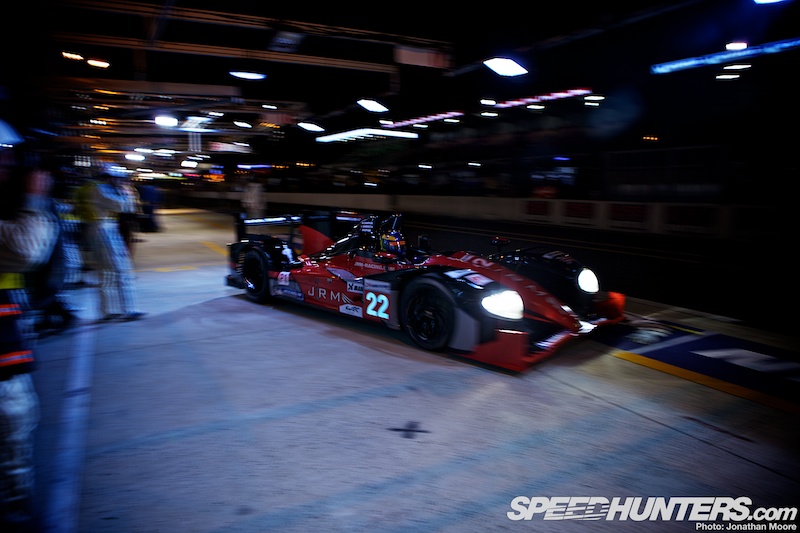
Luckily no major issues were found, but this elongated stop dropped #22 back a number of places, as the recovering #3 Audi and several LMP2s caught them back up during the quarter of an hour the HPD was stationary.
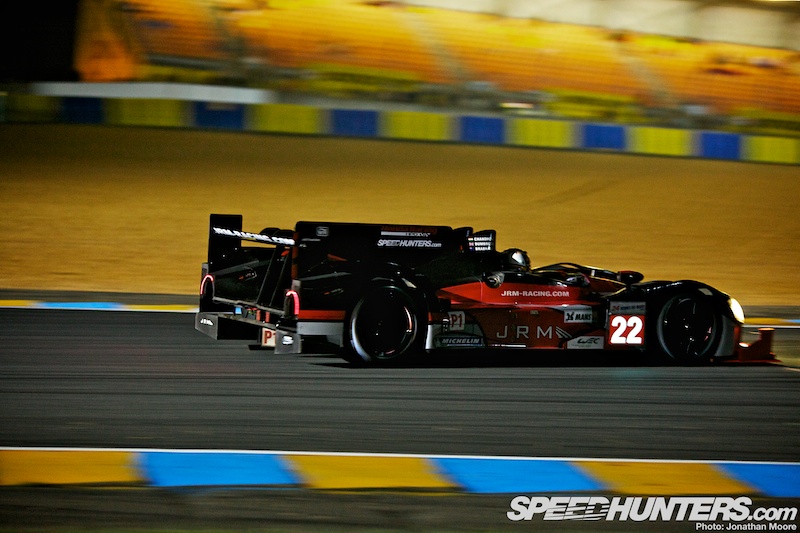
Peter: “Going through the first corner, the tyre just gave way and I was a passenger. It can happen here where the sharp stones get sucked into the car and damage the rubber. The gravel trap did its job and stopped me going into the wall but then I had to do almost the entire lap with a flat tyre. The pace was really good and we were up to P5 so with a bit of luck we knew we could regain some positions.”
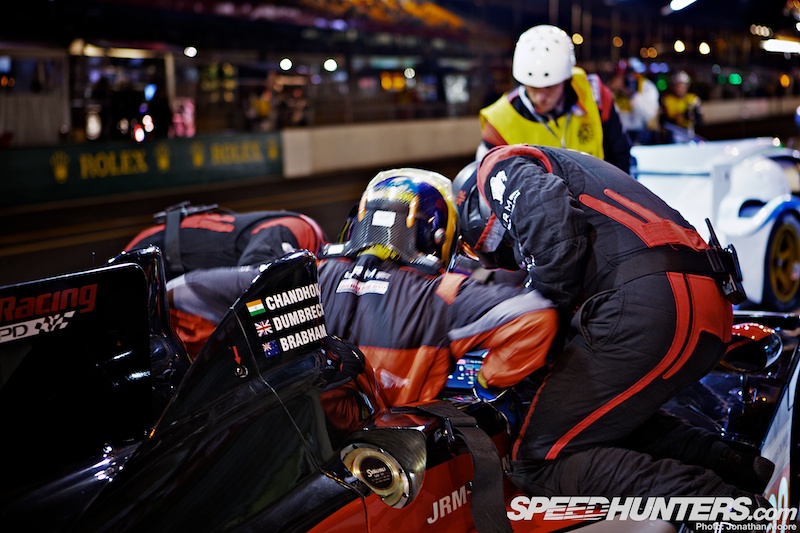
With the car now back in 17th position, David would take the car out for a double-stint: #22 would now have to fight back through the quickest LMP2 cars to get back into the top 10. He quad-stinted, stopping for fuel on laps 127, 137 and 148, changing tyres only on the second stop.
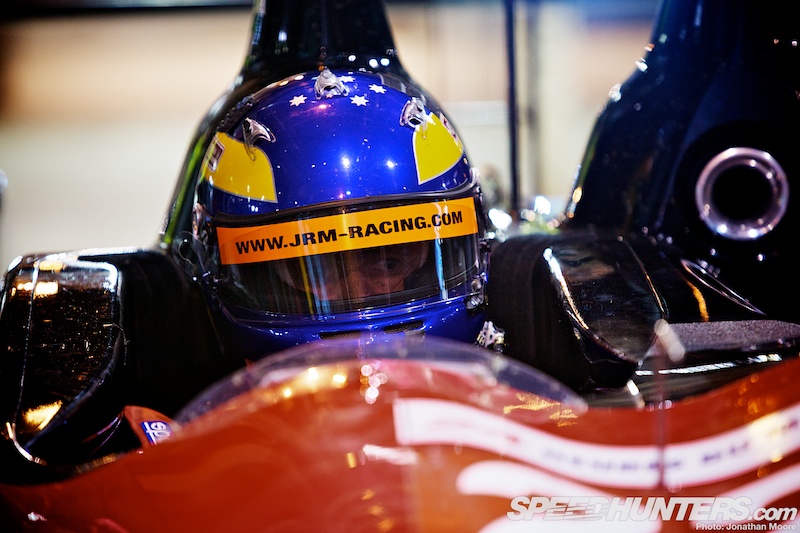
David: “I was able to get quickly back into the rhythm after Peter’s puncture and pick up positions. The first set of tyres was not as good as the second and we found that in traffic the temperature went out of them and we lost grip. I had a few yellow flags in the first stint and then on the second a bit of vibration where I went off line and picked up some dirt on my tyres, but overall the car felt pretty good and we didn’t have any major dramas.”
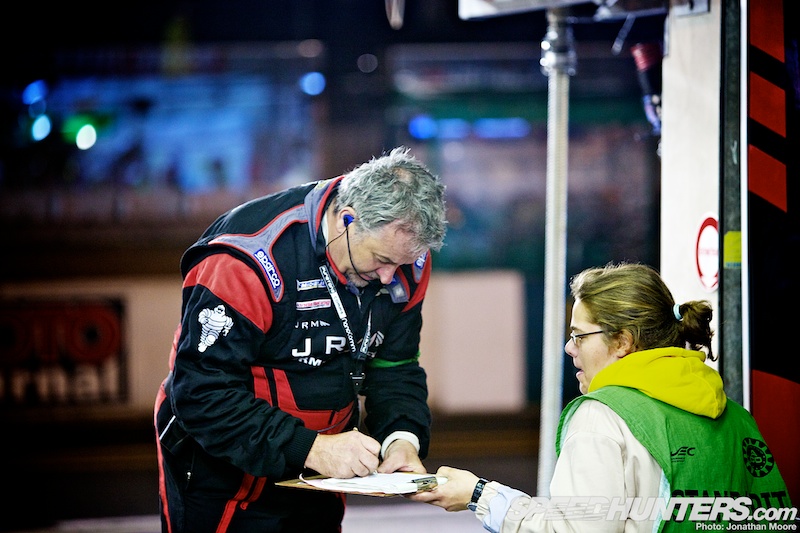
Even during a race there’s still red tape and paperwork to take care of: all tyres are barcoded and signed in and out, and even the car’s visit to the pits requires a team manager’s signature.
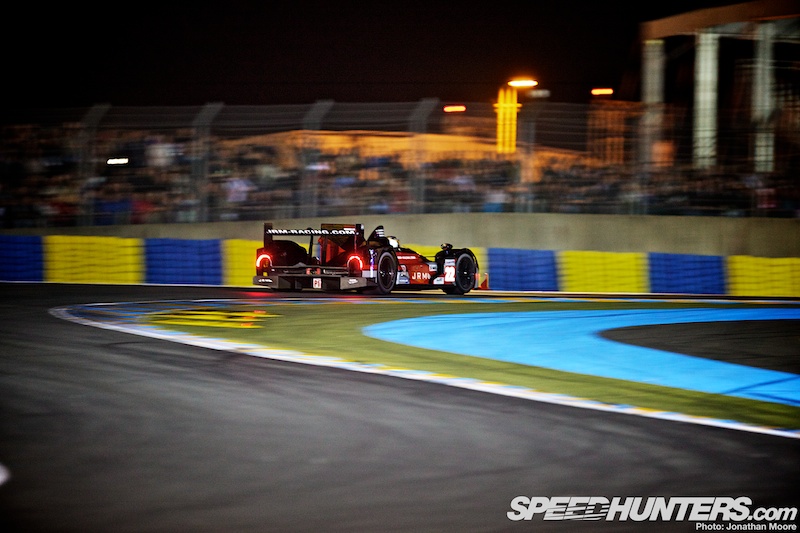
Karun took over from Brabs at the next driver-change after 158 laps, but on his first fuel stop at 2.30am, lap 169, he was also being pushed back into the garage, this time with a reported clutch problem. The problem was quickly diagnosed; Karun was soon out again and immediately thrust into a battle with the recovering Strakka HPD for 12th place, with #21 just 45 seconds back at that point. The fight lasted through the early hours of the morning, but in general Karun continued the charge back up the field, ending his triple-stint at 4.45am in ninth position after 200 laps.
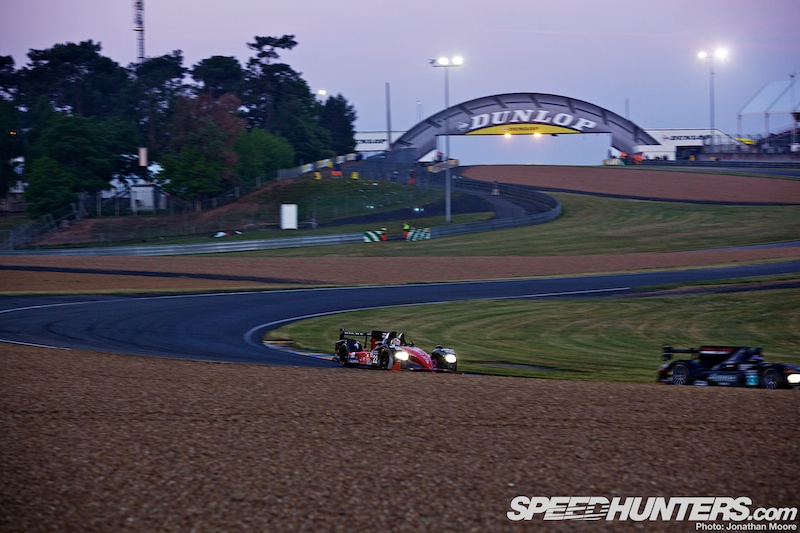
As the soft light of dawn began to illuminate the circuit, #22 was up to eighth position overall in the hands of Peter: he was now beginning to scythe through the leading LMP2 runners.
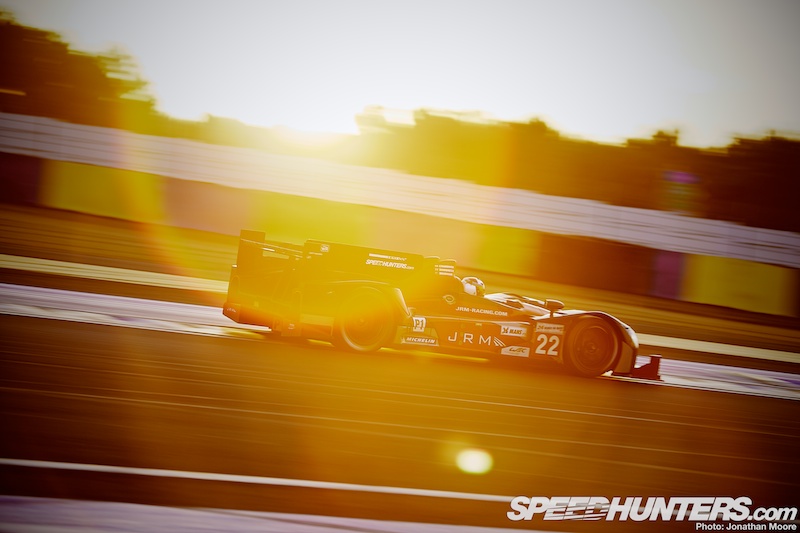
6:45am, with the sun now visible over the horizon it was seventh place for Dumbreck, just a couple of laps back from the sixth place Rebellion Lola.
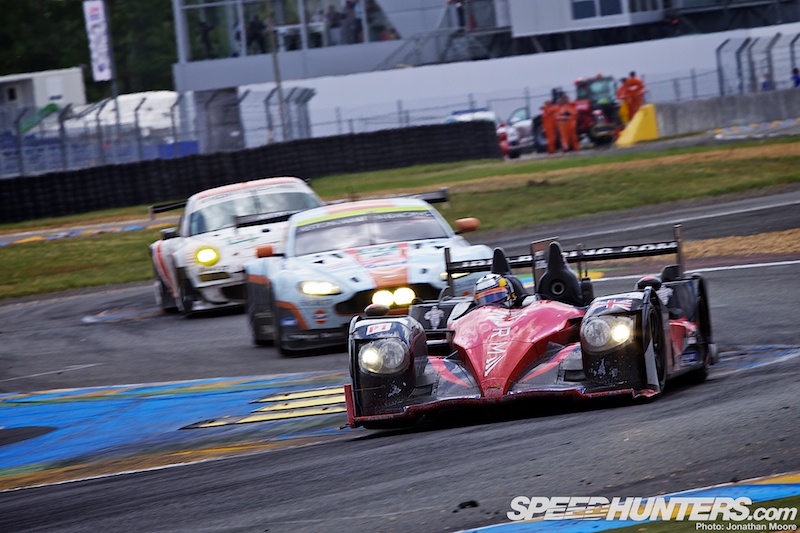
With Brabs back behind the wheel after Peter’s 42-lap stint and 243 laps completed, #22 set its fastest lap of the race at 8:49am during David’s triple-stint, though frustratingly for the team that was still several seconds slower than the Strakka HPD.
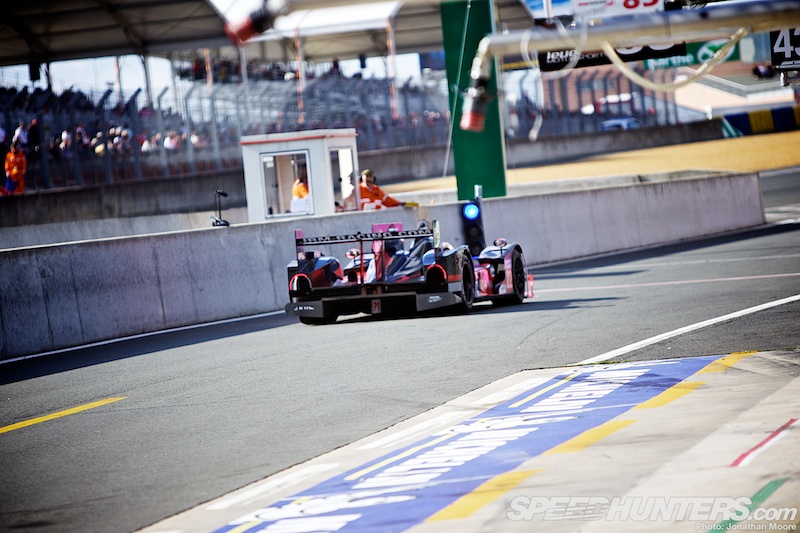
Next up was Karun again after 275 laps: he took over around 9:45am for his final run in the car and another quadruple stint. During this period the #13 Rebellion Lola hit trouble, moving #22 up to sixth. Karun: “Driving for nine of the last 36 hours and sleeping for four makes for a pretty tiring ratio! I ended up doing the graveyard shift from 2–5am, which was very special and exhausting in equal measure. It made me really understand the unique, special nature of this race.”
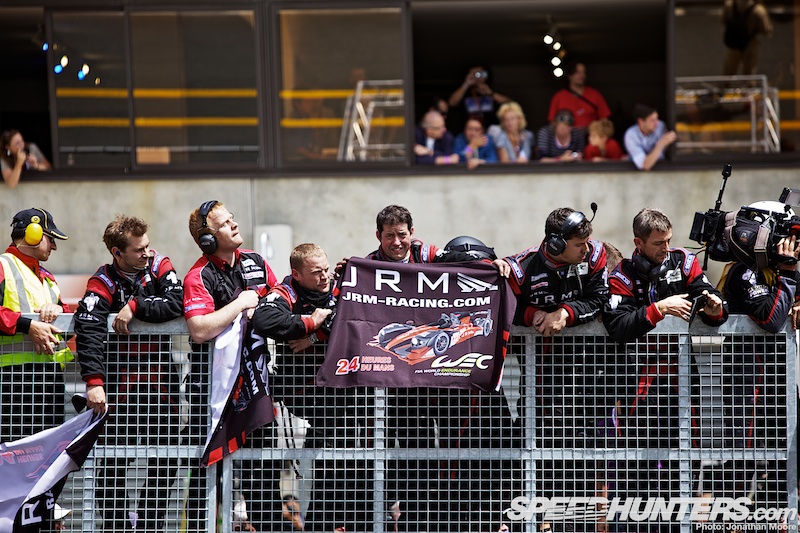
357 laps and over 4,800 kilometres after the start 24 hours earlier, Peter Dumbreck brought the HPD across the finish line in front of the hundred thousand fans and to the cheers of an ecstatic JRM team.
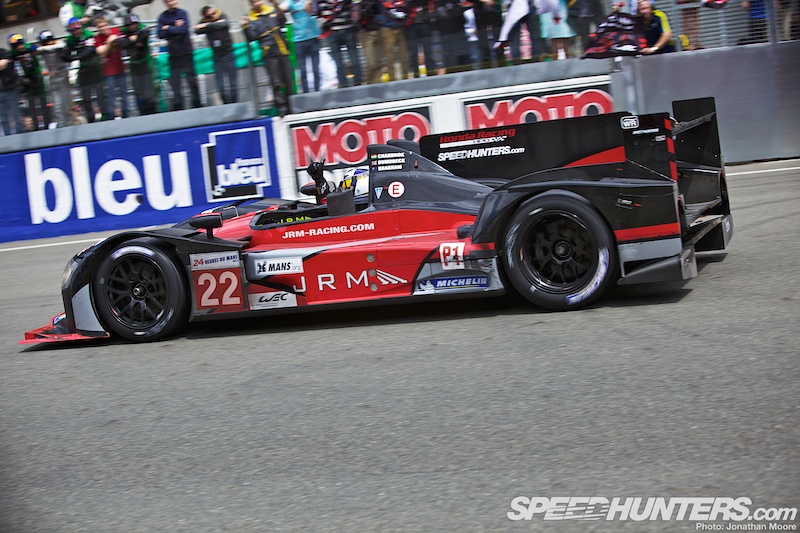
Peter: “The last stint was so nerve-wracking; I kept listening to every noise, vibration and little twitch thinking, what was it?! This result means so much to everyone that I was concentrating so hard at the end to give them the result they deserved. We thought it would be a miracle to finish, so I think we have to thank someone up there…”
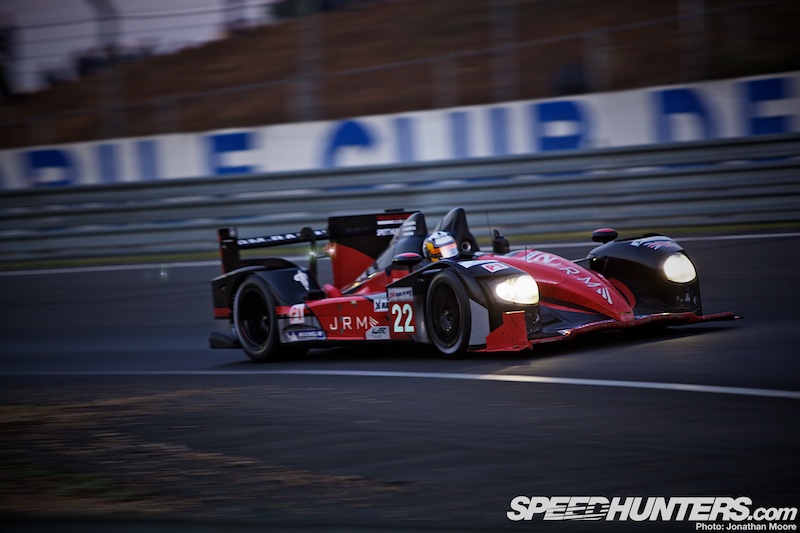
“David and I have both had our share of ups and downs in Le Mans so it’s great to finally get a good result – it’s something to build on for next year! Karun did a superb job in his first 24 hour race as well – I think as a driving trio we couldn’t have done any more.”
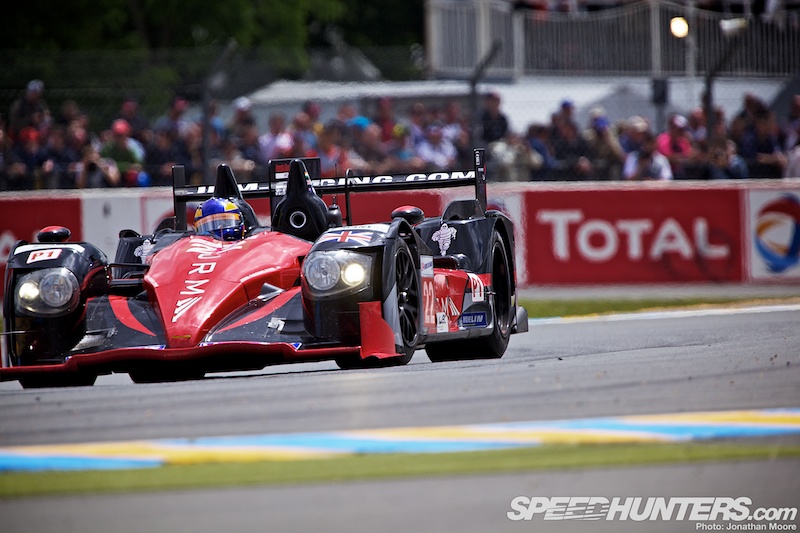
#22 ran in the top 10 for the majority 24 Hours with no real reliability problems and just minor issues to deal with: without the puncture and clutch problem they could have potentially got on terms with the leading privateer Rebellion Lola.

Nigel: “I’ve been in motorsport for longer than I care to remember, but this is a feeling that goes beyond anything I’ve experienced before. The sheer amount of effort that’s gone into the result in the months and weeks before this has tested everyone and it’s incredible that we have a result that justifies the workload. We’ve had more than our share of problems leading up to the race this week and a couple of minor issues in the race, but really reliability has been pretty good – the only issues we had were incidentals. There is a lot of luck in Le Mans and while we were lucky today, the preparation that’s gone in before has helped us get a bit of luck for ourselves.”
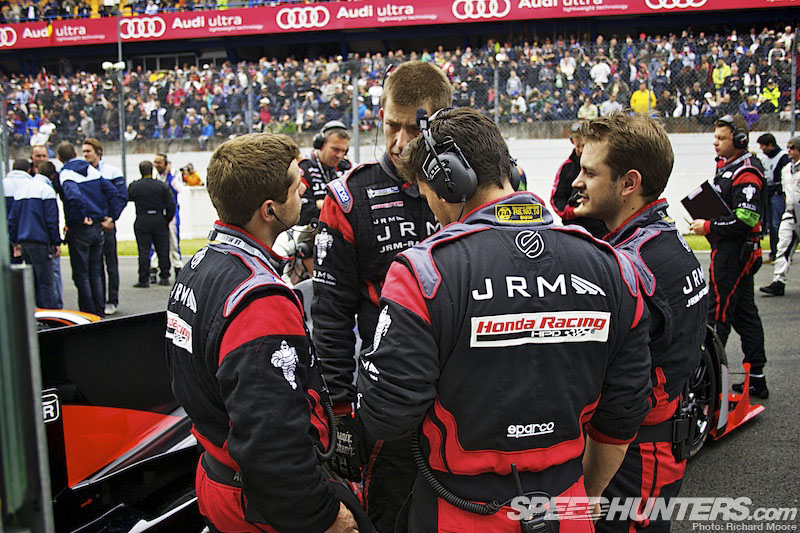
The team might not have been able to win against the diesels, but they did still take home some silverware: the JRM mechanics were awarded the prize for providing outstanding technical support during the race, as voted for by the Ecole Superieure de Commerce des Reseaux de l’Automobile.
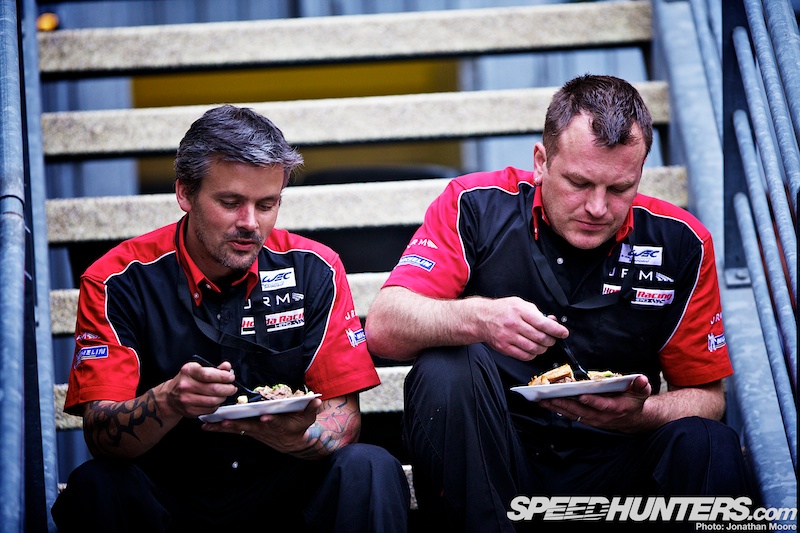
With few opportunities for sleep during the week, catching food on the run and rest when they could, the mechanics are the unsung heroes of Le Mans.
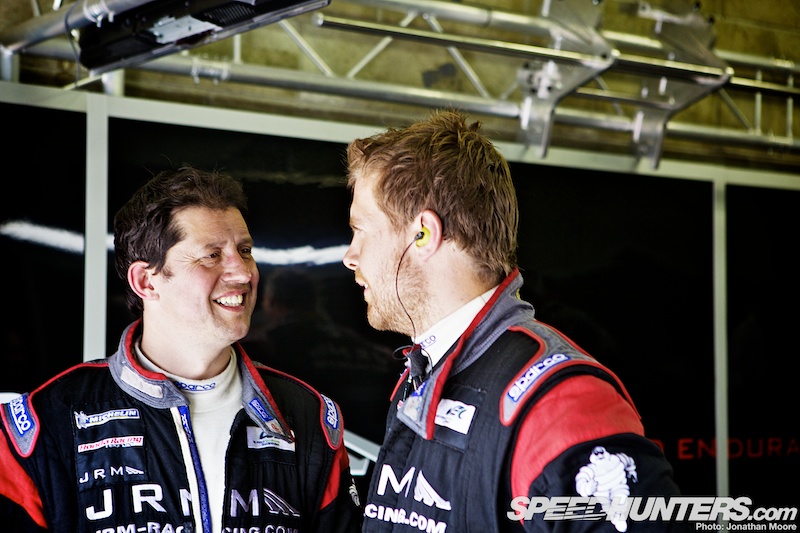
With champagne on the table, a trophy to carry and an HPD ARX-03a that had passed its first 24-hour race with flying colours, the JRM crew had every reason to be proud of themselves.
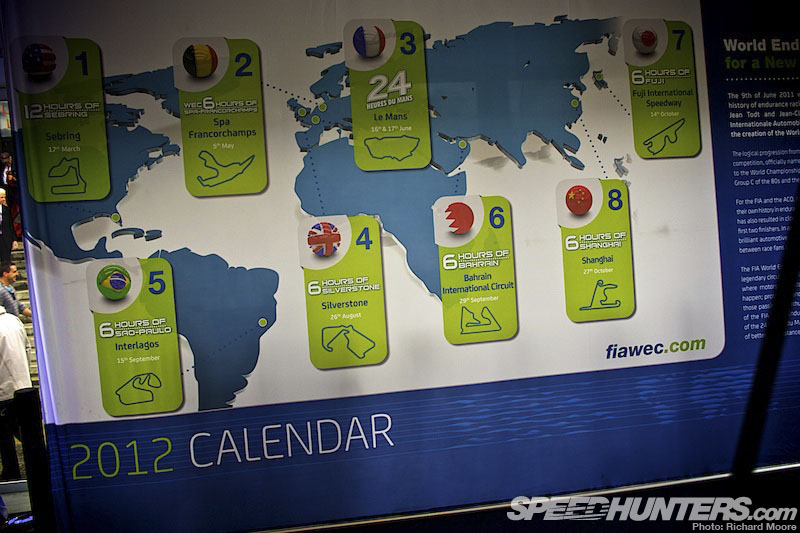
But the year is far from over. The team now lie second in the LMP1 Privateer points table in the WEC, chasing Rebellion’s two-car team – a great position for their single-car entry.
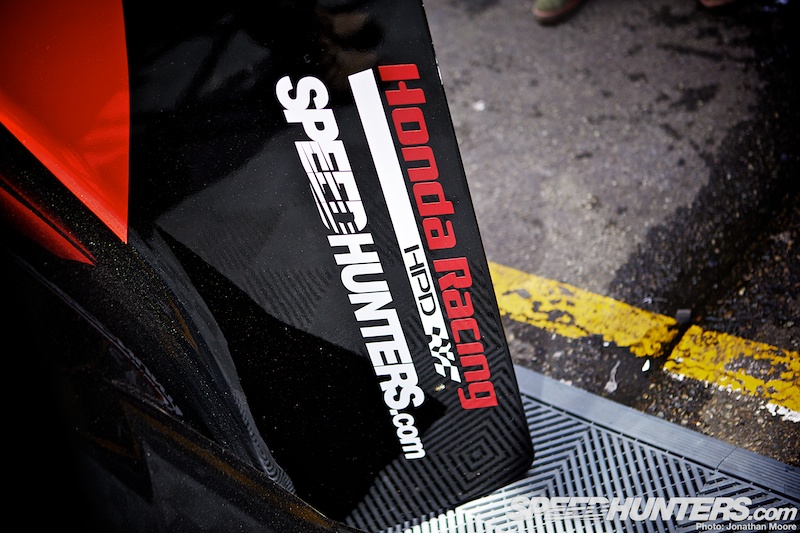
After Le Mans the three JRM drivers are seventh overall in the World Drivers Championship, with another five rounds to go until the title is decided: Great Britain, Brazil, Bahrain, Japan and China. There’s a long way to go, but JRM are going all the way.
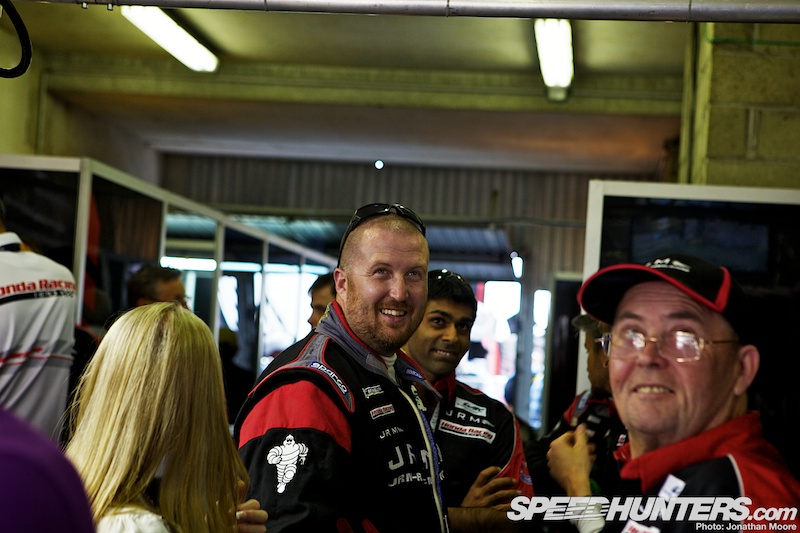
James: “Before the race I said we would be thrilled to finish the race. That was an underestimation – we are absolutely overjoyed. It’s only our third ever event as a team and our first Le Mans so to finish, and to finish well, is almost indescribable. I am so proud of everyone and am sure that this is just the start of something very big.”
Jonathan Moore
Speedhunters at the 2012 Le Mans 24 Hours
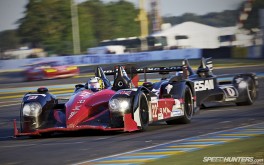
Photo by Jonathan Moore
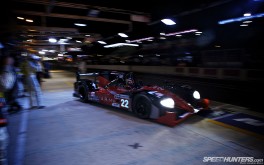
Photo by Jonathan Moore
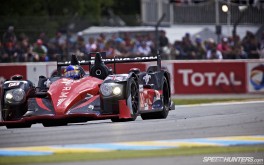
Photo by Jonathan Moore
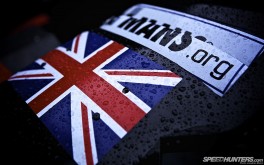
Photo by Jonathan Moore
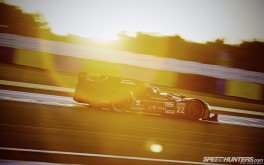
Photo by Jonathan Moore
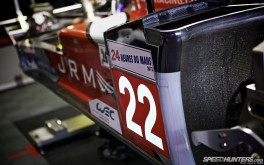
Photo by Jonathan Moore
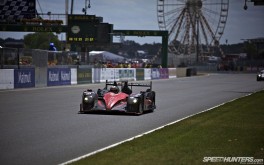
Photo by Jonathan Moore
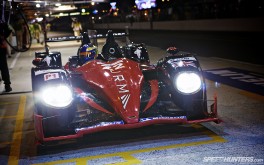
Photo by Jonathan Moore
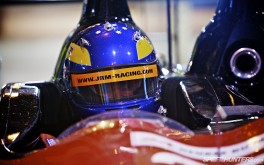
Photo by Jonathan Moore







Fantastic write up Johnathan!